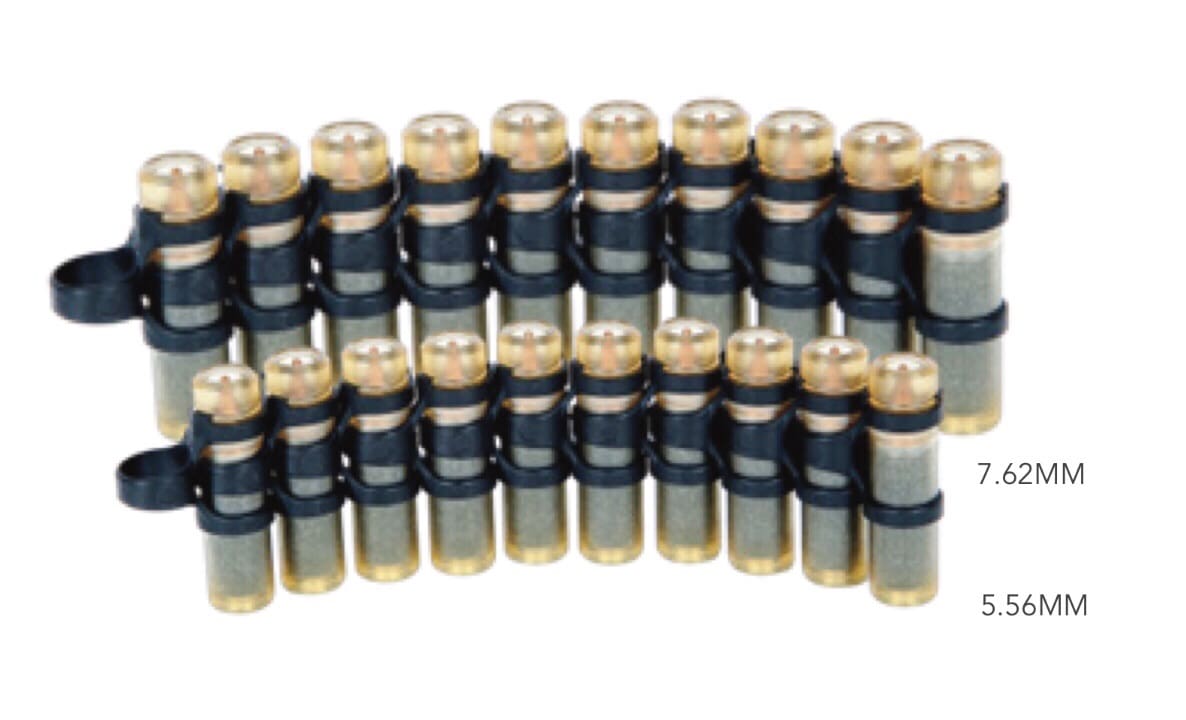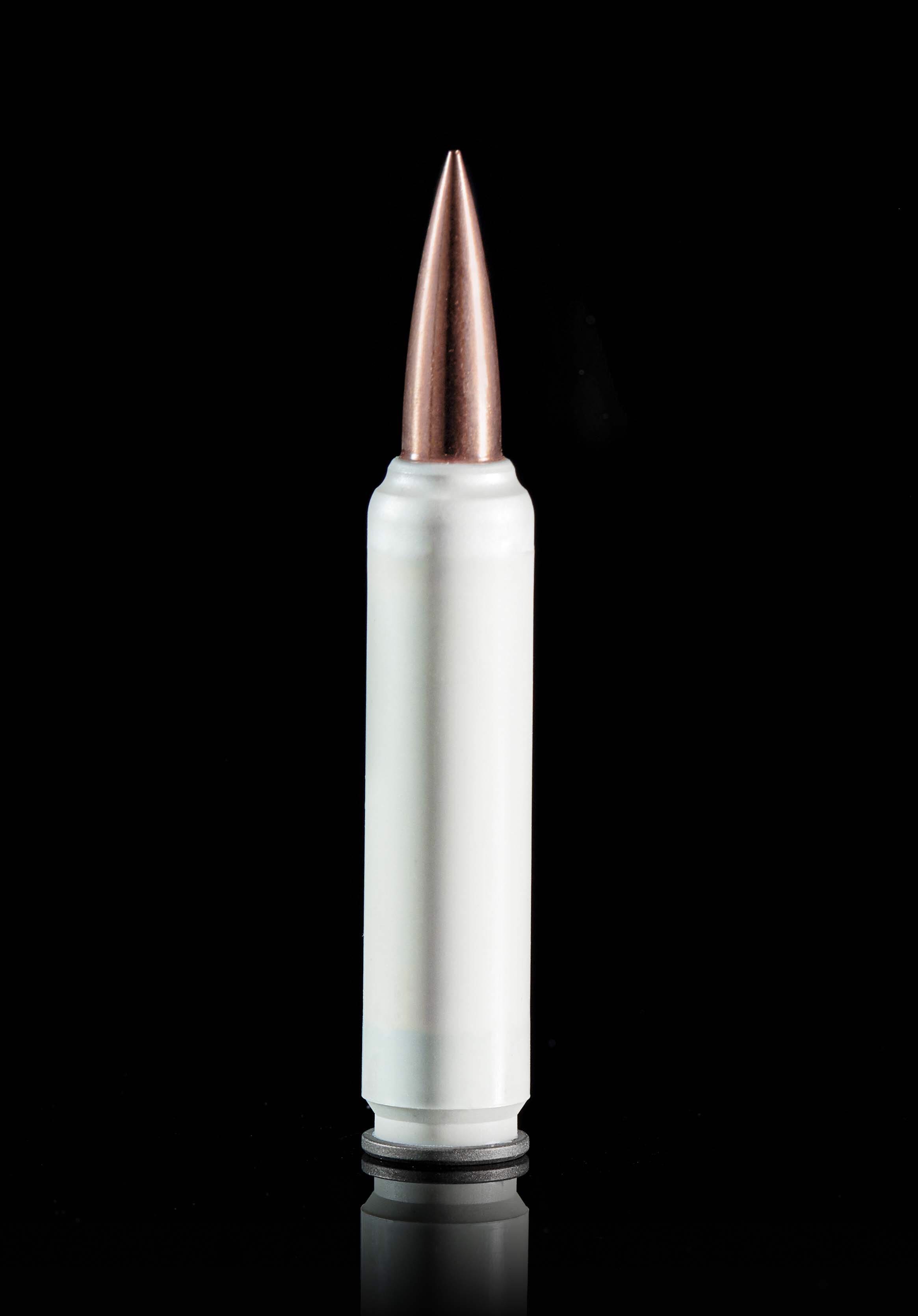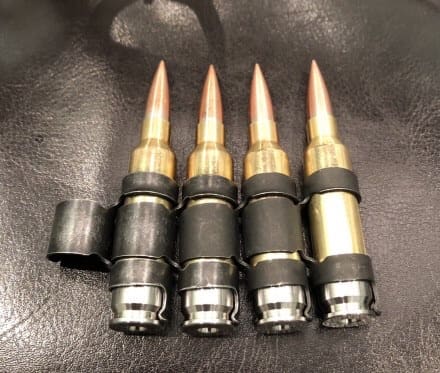Yesterday, the Department made this announcement:
Olin Winchester LLC, East Alton, Illinois, was awarded a $28,313,481 fixed-price with economic-price-adjustment contract for production of small caliber ammunition and the operation, maintenance, and modernization of the Lake City Army Ammunition Plant. Bids were solicited via the internet with three received. Work will be performed in Lake City Army Ammunition Plant in Independence, Missouri, with an estimated completion date of Sept. 27, 2029. U.S. Army Contracting Command, Rock Island Arsenal, Illinois is the contracting activity (W52P1J-19-F-0742).
Although it’s a very significant win for Olin Winchester, it has even larger implications for the Army’s future.
Lake City Army Ammunition Plant is a government owned, contractor operated facility. Most of the US military’s small arms ammo comes from that plant. It is currently run by Northrop Grumman, but that is all about to change.
Interestingly, Winchester is also teamed with AAI Textron on the US Army Next Generation Squad Weapons Program. For NGSW the Army seeks new ammunition, carbine, and automatic rifle to replace the current 5.56mm NATO M4A1 and M249 Squad Automatic Weapon. Although, at its very heart, NGSW is an ammunition development program. The ammunition will deliver the effects the Army is seeking as it retools to fight a near-peer competitor.
While one would argue that the government should have selected a cartridge and then challenged industry to build the best weapons to fire it, that’s not what they did. In NGSW, they gave industry a performance envelope and specified a caliber, offering 6.8mm projectiles to industry. Seeking performance similar to a .270 Win Short Mag, and instructing then to shed 20% weight over existing ammunition, they left the cartridge design to industry.
As the Army enters phase two of NGSW, they have down selected to three competing systems: AAI Corporation Textron Systems teamed with Olin Winchester for ammunition, General Dynamics OTS teamed with True Velocity for ammunition and SIG SAUER with their own ammunition solution. Of these, both Textron and GD’s solutions rely on polymer cases. Only SIG uses a metal case and it is a three-piece design combining steel and brass.
Here are the three competing ammunition offerings:
AAI Textron/Olin Winchester

General Dynamics OTS/True Velocity

SIG SAUER

Due to the costs associated with a wholesale change in both weapons and ammunition, the Army is understandably concerned with controlling costs by owning Intellectual Property associated with these designs. They are going to want as much of the data rights as possible transferred to them. Imagine the huge advantage Team AAI Textron will now have during final negotiations because their ammunition producer is running the factory it will be produced in.
One might argue that this contract award was made in a vacuum. After all, Program Executive Office Soldier owns the NGSW program and Joint Program Executive Office Armaments and Ammunition owns Lake City. But thanks to the Army’s recent Futures Command reorganization, both PEOs have representatives on the Lethality Cross Functional Team and are fully aware of one another’s activities, combining efforts of many programs, with special emphasis on NGSW. Remember, it’s really an ammunition program.
What’s more, LCAAP is old. It requires constant upkeep and the transition to a new ammunition for NGSW will require an entire new wing of the plant to be manufactured. Estimates are rumored to be around three-quarters of a billion Dollars to accomplish these capital improvements. If you look at the award, Winchester will hold the contract for the next decade. The Army plans to start rolling out NGSW in 2022.
The implications are of the value of producing the ammunition are even larger, as both Air Force and Marine Corps have signed on to NGSW. Naturally, United States Special Operations Command is also monitoring the program. One would expect close allies to join the US, once systems are fielded and show promise. All told, they are going to purchase a lot of ammo over the life of this program.
To be sure, Winchester is a capable company, currently selected to produce the new 9mm ammunition for Modular Handgun System. their ability to produce quality, safe and accurate small arms ammunition is without doubt. What’s interesting is their teaming with AAI Textron on the Case, Telescoped round which is unlike any currently fielded small arms ammunition. Not only is the design significantly different, resembling a shotgun round loaded with a sabot, but it requires an entirely new weapon operating system, with a rotating breech and the ammunition, both projectile and cartridge moving forward through the works, akin to an assembly line. Once again, they will have a serious leg up, knowing how to produce this unique cartridge and running the plant it will be built in, if CT ammunition is selected, of course.
After all, munitions are the gift that keeps on giving. An army will only buy so many weapons, but the munitions it fires are expendable. They’ve got to constantly be purchased. So is this contract award an indication of the shape of things to come, in the form of Case, Telescoped? Or, is it a guarantee that Winchester comes home a winner on NGSW, no matter which ammunition type is selected by the Army?
NGSW is an ammunition program, with weapons thrown in because something has to shoot it. The Army has already decided who will make that ammo. Now, they’ve got to decide what it will look like.


Two concerns I have with the case, telescoping, are: bulk, they say it weighs less but looks more bulky which will reduce the amount of ammo you can carry where space is constrained. Second is the case expands forward of the tip of the bullet, which means you’re going to have a large distance to jump before the bullet engages the rifling. Some bullets prefer to have no jump and be jammed into the rifling, but you lose this ability to fine tune the round when you have a large set jump.
It weighs less than a comparable round. The projectile alone is only 38 grains less in weight than the entire M855A1 cartridge weighs. No matter what the ammo will weigh more.
Second is bulk, it’s shorter than a standard round, but nearly .51″ in diameter.
I’ll go out on a limb here and say that’s probably something that AAI Textron/Winchester thought of.
Umm, wow. I’m sure that gives the other competitors the warm fuzzies. Bad Idea to pair the ammo and weapons? Maybe, but they would have likely selected CT (home team)still giving an advantage. Why does this always seem to happen? I mean we can go all the way back to trapdoors and .276 Peterson Garands- seems like the only way out of it is being forced by some political entity.
I wouldn’t be so quick to tout Winchester’s ability to produce quality safe ammunition. We see a lot of Winchester products come through my place of work. In the past couple of years I’ve seen the following from Winchester:
-DUTY ammunition (pistol and rifle) have come out of the box with badly dented cases (boxes themselves were not damaged)
-RA556B duty rifle cartridges blowing primers in 2 different Colt rifles
-Squib rounds (yes plural) caused by white box practice ammo
Multiple LE agencies have dumped Winchester products as a result.
That being said, the military contract is far bigger than the entire LE market so I would hope Winchester would do a better job on this ammo (if they are selected).
How hard is it to clear a malfunction in the weapons that use the CT round? Oh wait it’s a cool wiz bang toy for the Army brass to ogle after. From the pictures I have seen of the carbine the ergonomics of that rifle look abysmal.
But then again many times that is the lowest thing they consider.
I definitely think this contract is Textron’s to lose; almost all of the early NDIA slides on ‘next generation’ weapons show mock-ups of the LSAT weapons system.
That said, True Velocities new ‘neckless’ polymer conventional case really seems like the ‘goldilocks’ of the 3 cartridge designs.
-Most of the weight savings of LSAT
-Neckless design fixes one of the traditional weaknesses of polymer conventional cases, and also allows a longer exposed ogive relative to COL.
-Like the SIG case, the TV allows the use of conventional, well understood weapons actions, making it compatible with the expertise of the current firearms industry.
There’s a reason all of the future weapons slides feature LSAT. The government has been paying Textron for it for over 15 years. It’s the government solution.
To be fair to the LSAT, it made a lot of sense in its initial impetus – substantially lowering the weight of machine gun ammunition.
Its only in the last few years with the introduction of hybrid metallic cases from Shell Shock and SIG, or this new generation of polymer conventional cases from True Velocity, that there was a really viable alternative to LSAT for lightweight case design.
Frankly, the other firearms and ammunition companies really should have launched their own ‘manhattan project’ to create an alternative lightweight ammunition once LSAT started gaining steam. As is stands, it looks like most have been left behind now due to that lack of R&D investment.
The thing is, it never gained steam. There was zero commercial business case for doing it. Sure, polymer has chugged along the last few years, but as I pointed out in the article, ammo is always in demand. There was no imperative to look for alternatives.
There was certainly tremendous military business incentive to develop lightweight case technology. Lightweight cases reduce soldier load, reduce transport cost, increase helicopter flight time in the case of the minigun, and allow the creation of more powerful but weight neutral cartridges. It’s been pretty clear for some time that once a working lightweight case system was developed, it would be of tremendous interest to militaries world wide.
It also would have been interesting commercially in that it could reduce case costs to below that of brass. Shell Shocks aluminum/steel hybrid cases, for example, are 50% lighter while also being cheaper then Starline brass.
Now without doing this investment, it looks like majority of the worlds firearms and ammunition companies are missing out on a potentially enormous contract with the US and likely NATO afterwards.
I protest on behalf of the locals of the next country we invade and set up shop in who expect to be able to steal our brass casings. We’ll be leaving them empty handed and make them unable to sell the materials in order to take arms against us to sustain an enduring insurgency against us. What is this cruelty we’re undertaking? (Sarcasm heavily implied)
I find it interesting that the author regards NGSW as an ammunition program first and a weapons program second. Whatever it is, NGSW is an ambitious program with four significant variables that ratchet-up complexity, cost and risk:
– Introduces a new calibre
– Introduces a new ammunition configuration
– Introduces a new type of weapon action
– introduces two new weapons simultaneously
Given previous US Army Small Arms programs that had the same level of ambition, including SPIW, ACR, and OICW, I really hope NGSW doesn’t end the same way and become an expensive failure.
For me what makes it more than just an ammunition program is that it is competition is between two ammunition types. True Velocity and SIG have both opted to develop traditional ammunition that relies on REARWARD ejection, with one using brass + steel and the other polymer + steel. Textron’s approach is radically different since it uses all polymer and because the empty case is ejected FORWARD, as a fresh round is chambered. This means you don’t need a robust cartridge base that can withstand significant extraction forces. The other advantage of forward ejection is that you can fire right or left handed easily, making it ideal for use in a Bullpup weapon. It will be hugely interesting to see which works best.
Even if Textron wins, I’m not sure it will create a definitive action design for future cased-telescoped (CT) ammunition weapons. Once the US Army decides to go with the Textron CT system, other weapon designers will start to develop new weapons with new CT action types to fire it. I certainly hope this is the case, because the Textron weapons appear to have so many parts that they look like Swiss cuckoo clocks inside.
For all of its weight-saving advantages, my beef with cased-telescoped ammunition is exactly the same as that described by another comment above. This is the fact that the bullet travels almost its own length before seating in the throat of the barrel. This will cause barrel erosion just as much as higher chamber pressures will. We have the same problem in the UK with our 40 mm cased-telescoped cannon for our Armored Recon and IFV platforms. Though Bae Systems and Nexter have done much to increase barrel life, 40 mm CT cannons still don’t have shame 10K barrel life as a 30 mm Bushmaster II.
While it will take time and effort to perfect NGSW technologies, USASOC has spent the last couple of years field testing 6.5 Creedmoor using re-barrelled legacy 7.62 mm weapons. Operators have enjoyed immediate performance gains with very few problems at a very low cost. It’s an evolutionary approach not a revolutionary one, but I’m fine with that if it stops our soldiers experiencing fatal stoppages in combat.
The ergonomics of the Textron weapon looks atrocious, but please prove me wrong. Not to mention the thickness of the 6.5 cased telescoped round is bigger in diameter that the traditional 7.62mm NATO. Good luck getting 20 or more rounds in a mag, unless they have A completely different mag design by now.
They have a 6.8 round. I just don’t have a photo of it. Considering it’s the government solution and we’ve been paying for it for over 15 years now, we should all know everything about it, but for some reason, the government allows them to keep as much as possible under wraps.